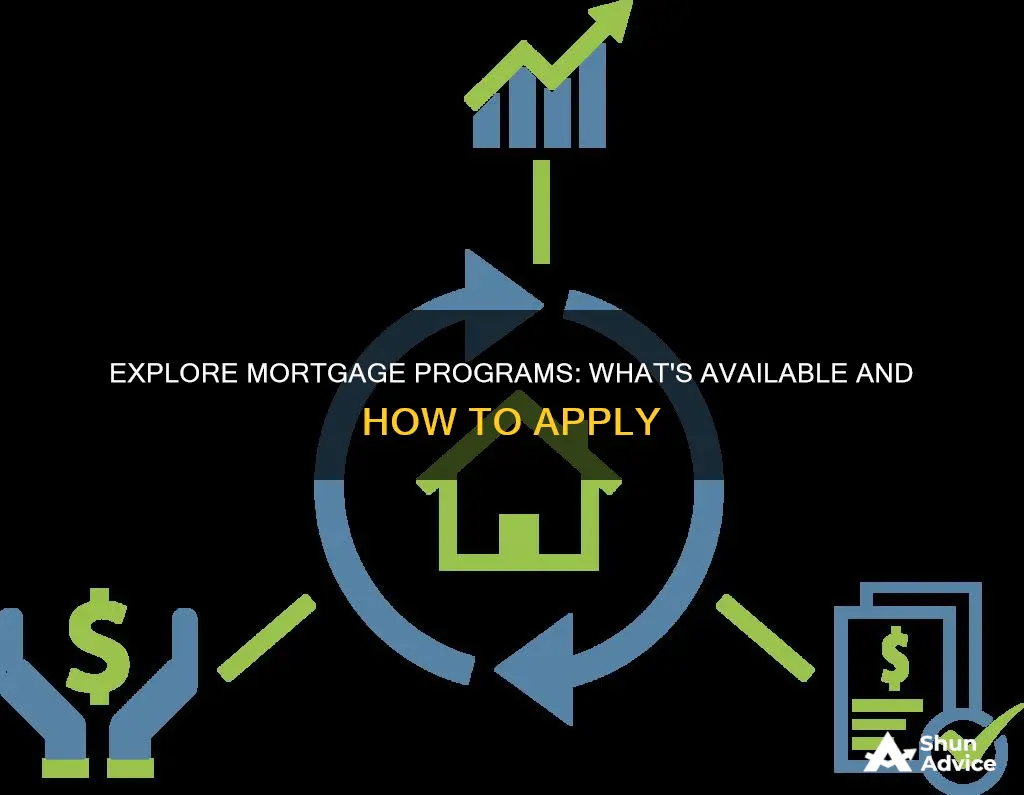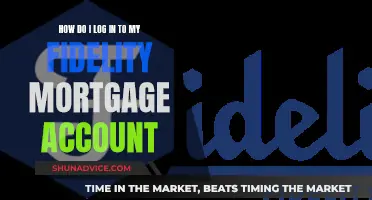
There are many mortgage programs available, and it can be overwhelming to choose the right one. It is important to understand the different types of mortgage loans and how they can serve your long-term homeownership needs. Mortgages are typically organised into categories based on the loan size and whether they are part of a government program. Government-backed loans, such as those from the Federal Housing Administration, often have lower credit score requirements and are ideal for first-time buyers. Conventional loans, on the other hand, have higher minimum credit score requirements and are harder to qualify for. There are also fixed-rate and adjustable-rate mortgages, which offer stability or flexibility, respectively, in interest rates and monthly payments. Other types of mortgage loans include construction loans, interest-only mortgages, and piggyback loans, each with its own unique features and suited to different financial situations.
Mortgage Programs Available in the US
| Characteristics | Values |
|---|---|
| Mortgage Type | Fixed-rate, interest-only, piggyback, balloon, adjustable-rate, variable-rate |
| Qualifying Factors | Credit score, debt-to-income ratio, credit history |
| Lender | FHA, VA, USDA, U.S. Bank, Bank of America |
| Target Group | First-time home buyers, seniors, veterans, active-duty military personnel, homebuyers in rural areas, low-income groups |
| Other Features | Low down payment, flexible credit and income guidelines, lower interest rates, shorter/longer loan terms, closing costs, escrow accounts |
What You'll Learn

Government-backed mortgage assistance programs
If you are looking to buy a home, you may want to consider exploring government-backed mortgage assistance programs or home loans. The federal government does not offer grants or "free money" to individuals to buy a home, and websites claiming to offer such things are often scams. However, there are several government-backed programs that can help you get a mortgage.
Federal Housing Administration (FHA) Loans
The Federal Housing Administration (FHA) manages the FHA loan program. It helps homebuyers by insuring their loans so that lenders can offer lower down payments and closing costs. FHA loans offer assistance to first-time homebuyers, seniors who partially or fully own their homes, and those buying a manufactured or mobile home. FHA loans have a lower credit score requirement than most home loans.
Department of Veterans Affairs (VA) Loans
The Department of Veterans Affairs (VA) helps veterans, surviving spouses, and service members get home loans. These loans can help you purchase a home, refinance your mortgage, or finance home repairs.
Indian Housing (Home) Loan Guarantee Program
The Indian Housing (Home) Loan Guarantee Program ("Section 184") is a home mortgage program designed for American Indian and Alaska Native families, Alaska villages, tribes, and Tribally Designated Entities.
Native American Direct Loan (NADL) Program
The Native American Direct Loan (NADL) program is for American Indian and Alaska Native veterans and veterans married to an American Indian or Alaska Native. It can help you purchase or build a home or improve your existing home.
State-Specific Programs
There are also various state-specific programs that offer down payment and closing cost assistance. For example, the Idaho Housing and Finance Association (IHFA) operates two programs that help with down payments and closing costs through forgivable second mortgages. Similarly, the Oklahoma Housing Finance Agency (OHFA) and REI Oklahoma both offer down payment and closing cost assistance to homebuyers in Oklahoma.
Is Your Mortgage Federally Backed? What You Need to Know
You may want to see also

Fixed-rate mortgages
The interest rate on a fixed-rate mortgage is locked in at the beginning of the mortgage process, and it will not change even if the broader market conditions do. This can be beneficial if you plan to stay in your home for the long term, as it provides stability and security, knowing that your monthly payments will not increase.
In the early years of a fixed-rate mortgage, most of your monthly payments will go towards paying off the interest, with only a small portion going towards the principal loan amount. However, as you progress through the loan term, this allocation gradually shifts, and you will pay more towards the principal and less in interest. By the end of the loan, you may even pay significantly more towards the principal than the interest.
Recognizing a MERS Mortgage: What You Need to Know
You may want to see also

Adjustable-rate mortgages (ARMs)
ARMs are generally recommended for borrowers who plan to stay in their homes for only a few years or those who intend to refinance after the introductory period. This is because borrowers can take advantage of the low initial rate and then sell or refinance before the rate adjusts. While there is a risk of increased mortgage payments if the rate adjusts upward, it is important to note that the rate could also decrease, resulting in potential savings.
There are several types of ARM loans available, including hybrid ARMs, interest-only ARMs, and payment-option ARMs. Hybrid ARMs are the traditional form of adjustable-rate mortgages, with a fixed interest rate for a few years, usually three to ten, followed by rate adjustments on a preset schedule. Interest-only ARMs allow borrowers to make interest-only payments for a set period, after which they begin paying both principal and interest. Payment-option ARMs provide borrowers with flexibility, as they can choose their payment structure and schedule within certain parameters.
When considering an ARM, it is important to understand how the interest rate is determined. ARM loan rates are based on an index and margin and may adjust as outlined in the loan agreement. The index rate can change, but the margin remains fixed. Common indexes for ARM rates include the weekly constant maturity yield on the one-year Treasury bill, the 11th District cost of funds index (COFI), and the secured overnight financing rate (SOFR). The specific index followed by a particular ARM should be identified in the loan paperwork.
Finding Your Wells Fargo Mortgage Balance: A Guide
You may want to see also

Construction-to-permanent loans
To obtain a construction-to-permanent loan, borrowers typically need to submit detailed plans and work with approved professionals. This includes hiring licensed, professional builders and submitting copies of their licenses, certificates, and/or resumes to the lender. Additionally, these loans usually require a down payment, which can be as high as 20% of the total loan amount. Since there is more risk involved in building a home, lenders typically have more stringent requirements for construction-to-permanent loans.
Fannie Mae: Does It Own My Mortgage?
You may want to see also

Reverse mortgages
The amount of money that can be borrowed through a reverse mortgage depends on the equity in the home, and the borrower's age. Unlike traditional mortgages, there are no monthly payments, and the loan is repaid when the borrower no longer lives in the home. Interest and fees are added to the loan balance each month, which increases the debt and decreases the equity. Reverse mortgages can be an expensive way to borrow, with higher fees and costs compared to other loan options. It is important to note that a reverse mortgage can limit future options as it must be paid back when the borrower moves or passes away, which may result in the borrower or their estate getting nothing from the sale of the home.
Borrowers considering a reverse mortgage should be aware of potential scams and seek information from legitimate sources, such as the US Department of Housing and Urban Development (HUD). Additionally, most reverse mortgages offer a three-day right to cancel without penalty, known as the right of "rescission." This allows borrowers to cancel the loan within three business days after closing, by notifying the lender in writing.
Overall, reverse mortgages can provide older homeowners with access to cash without the need to sell their homes immediately, but it is important to carefully consider the potential risks and financial implications before proceeding.
Understanding Subprime Mortgages: Am I at Risk?
You may want to see also
Frequently asked questions
The type of mortgage program you can apply for depends on your financial situation and what you need the loan for. Here are some of the most common types:
- Fixed-rate mortgages
- Adjustable-rate mortgages (ARMs)
- Government-backed mortgages
- Conventional mortgages
- Construction-to-permanent loans
- Interest-only mortgages
- Piggyback loans
- Reverse mortgages
- Jumbo mortgages
A fixed-rate mortgage is ideal for those who want the security of knowing what their interest rate and monthly payment will be year after year. This is because the interest rate and monthly principal and interest payment stay the same for the duration of the loan.
An ARM is the opposite of a fixed-rate mortgage. The interest rate changes over time, with a fixed introductory rate for a set period, then changing at predetermined intervals for the remainder of the loan term.
A government-backed mortgage is a good option for those who cannot afford a conventional mortgage. They have lower credit score requirements and are ideal for first-time homebuyers. The Federal Housing Administration (FHA) manages the FHA loan program, which insures loans so lenders can offer lower down payments and closing costs.
A conventional mortgage is any mortgage that isn’t backed by the federal government. They have higher minimum credit score requirements, typically 620, and are harder to qualify for than government-backed mortgages.
It depends on your financial situation and what you need the loan for. If you are a first-time homebuyer, a government-backed mortgage may be a good option. If you are building a home, you can take out a construction-to-permanent loan. If you are a senior, you may qualify for a reverse mortgage. If you are buying a luxury home, you may need a jumbo mortgage.







